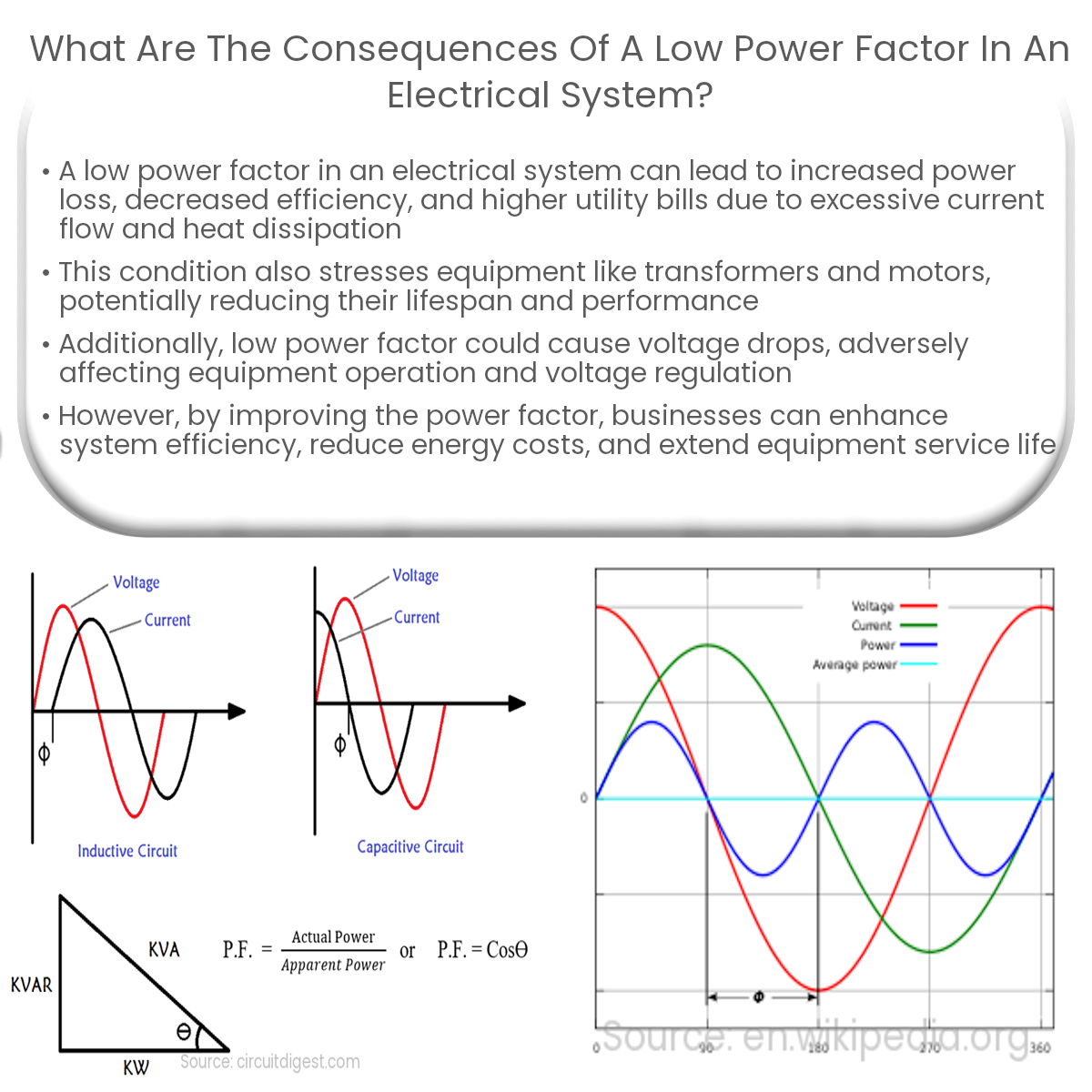A low power factor leads to increased power loss, reduced efficiency, equipment stress, higher utility costs, and voltage regulation issues.
Consequences of a Low Power Factor in an Electrical System
A low power factor in an electrical system can lead to several negative consequences, impacting efficiency, cost, and equipment lifespan. This article discusses the primary consequences of a low power factor and why maintaining an optimal power factor is essential.
1. Increased Power Loss
Low power factor results in higher current flow through the system, which in turn increases power loss as heat dissipation in the conductors. This increased power loss is not only wasteful but can also lead to higher utility bills and increased energy consumption. By improving the power factor, the current flowing through the system can be reduced, minimizing power loss and enhancing overall efficiency.
2. Reduced System Efficiency
With a low power factor, the electrical system’s efficiency is compromised as more reactive power is drawn from the source, leading to higher energy consumption and utility bills. A low power factor also means that a larger portion of the electrical system’s capacity is consumed by reactive power, leaving less capacity for active power, which is responsible for performing useful work. Improving the power factor can increase the system’s efficiency and reduce energy costs.
3. Equipment Stress
A low power factor can cause increased stress on electrical equipment such as transformers, generators, and motors, reducing their lifespan and efficiency. High current flow due to a low power factor generates excessive heat, which can lead to premature aging, insulation failure, and other issues in electrical equipment. Maintaining a high power factor can help protect equipment from unnecessary stress and prolong its service life.
4. Increased Utility Costs
Most utility companies charge industrial and commercial customers for low power factors, as they increase the amount of current required to deliver the same amount of active power. This additional current can strain the utility’s infrastructure, leading to higher costs for the utility company, which are then passed on to customers. By improving the power factor, businesses can reduce their energy costs and avoid penalty charges.
5. Voltage Drop and Voltage Regulation Issues
A low power factor can result in voltage drop across the electrical system, affecting voltage regulation and equipment performance. This voltage drop can cause equipment to operate inefficiently, potentially leading to malfunctions or reduced productivity. Improving the power factor can help maintain stable voltage levels and ensure that equipment operates as intended.
Conclusion
A low power factor in an electrical system can have several negative consequences, including increased power loss, reduced efficiency, equipment stress, higher utility costs, and voltage regulation issues. By understanding and addressing power factor issues, businesses can significantly improve their electrical systems’ efficiency and performance while reducing costs and prolonging equipment lifespan.


